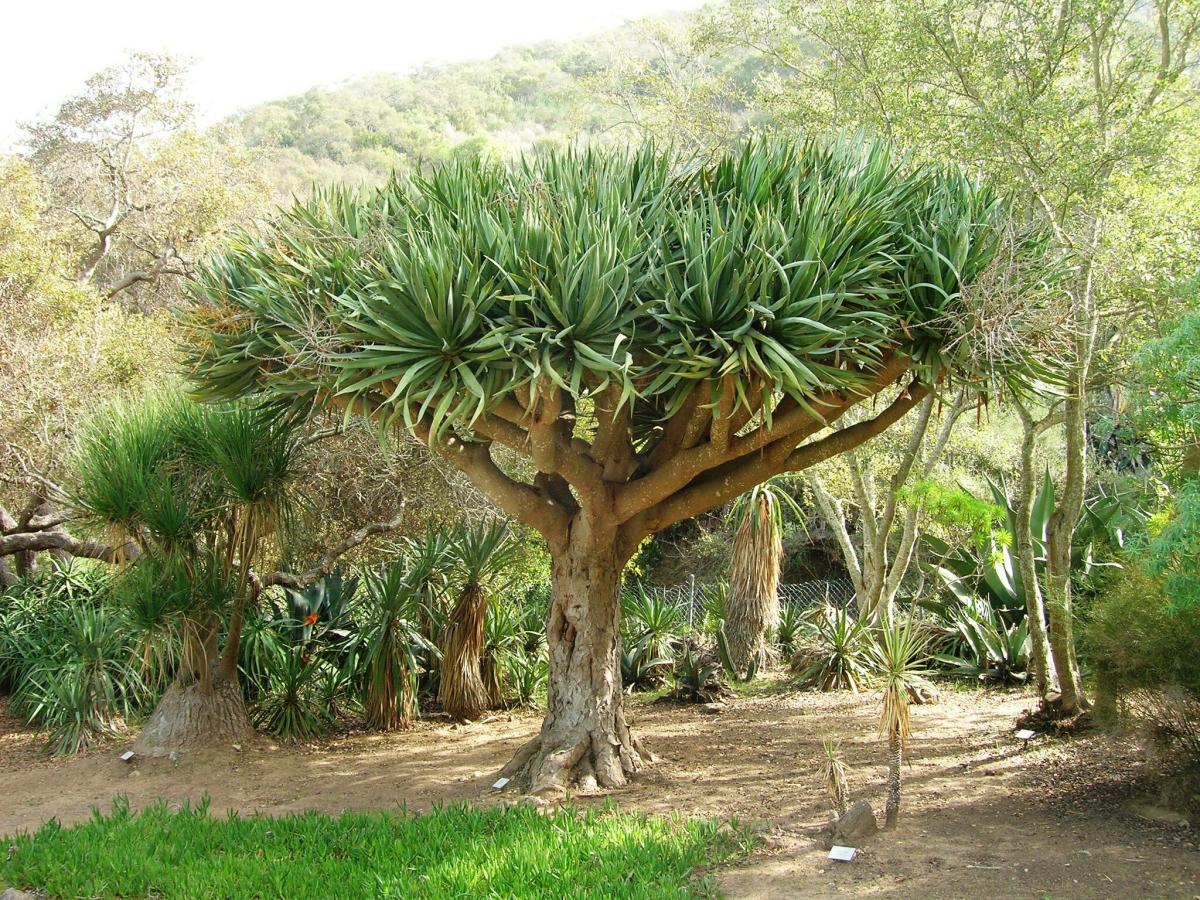
Image - Flickr / brewbooks
The canary drago is a survivor. It takes its time to grow, taking advantage of its energy to do so when conditions allow it; and both its leaves and its trunk and roots allow it to resist drought without problems.
These are the qualities that have made its cultivation reach those regions where rainfall is very scarce, and where the sun shines strongly in summer.
How is the canary drago?
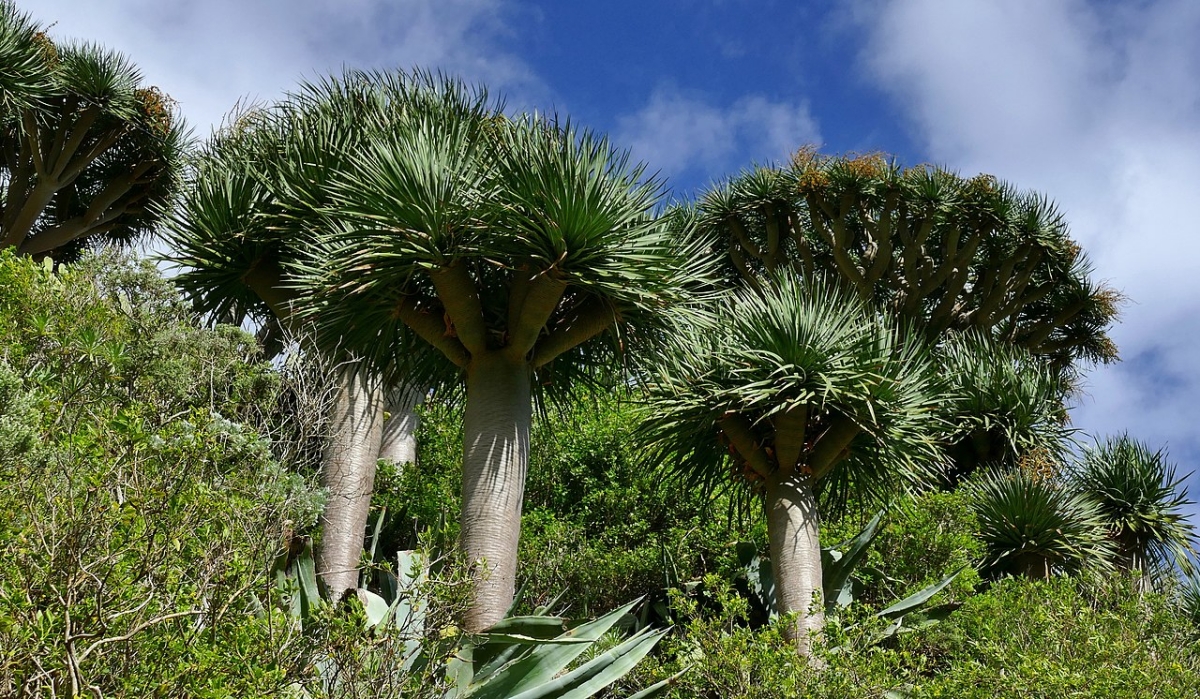
Image - Wikimedia / Puusterke
Our protagonist is a tree that we will find wild in the Canary Islands, and in western Morocco. Its scientific name is dracaena draco, and It is a plant that measures a maximum height of 18 metersalthough it grows very slowly. In fact, it can take an average of ten years to reach a meter in height. It is also slow to branch: it begins to do so after flowering for the first time, around 15 years of age.
Its crown is made up of thick branches from which elongated leaves sprout, with a leathery texture, grayish green or glaucous, and up to 60 centimeters long. Its flowers are white and sprout in clusters. They die at the end of flowering.
What is?
In the past, the aborigines believed that it was a magical tree, since the sap turns red when it comes into contact with the air, hence the name "dragon's blood". Once they dried it and turned it into powder, they used it as if it were medicinal, to cure hemorrhages and ulcers, and even to clean their teeth.
Today, however, its most widespread use is ornamental.. Although it grows very slowly, it is a beautiful plant even when young. During its early years it is usually grown in a pot, for example on patios and terraces; and later, normally when it begins to have a trunk, it is planted in the ground.
In addition, is the plant symbol of the island of Tenerife, where we can find a specimen that is between 500 and 600 years old, specifically in the municipality of Icod de los Vinos.
How do you take care of dracaena draco?
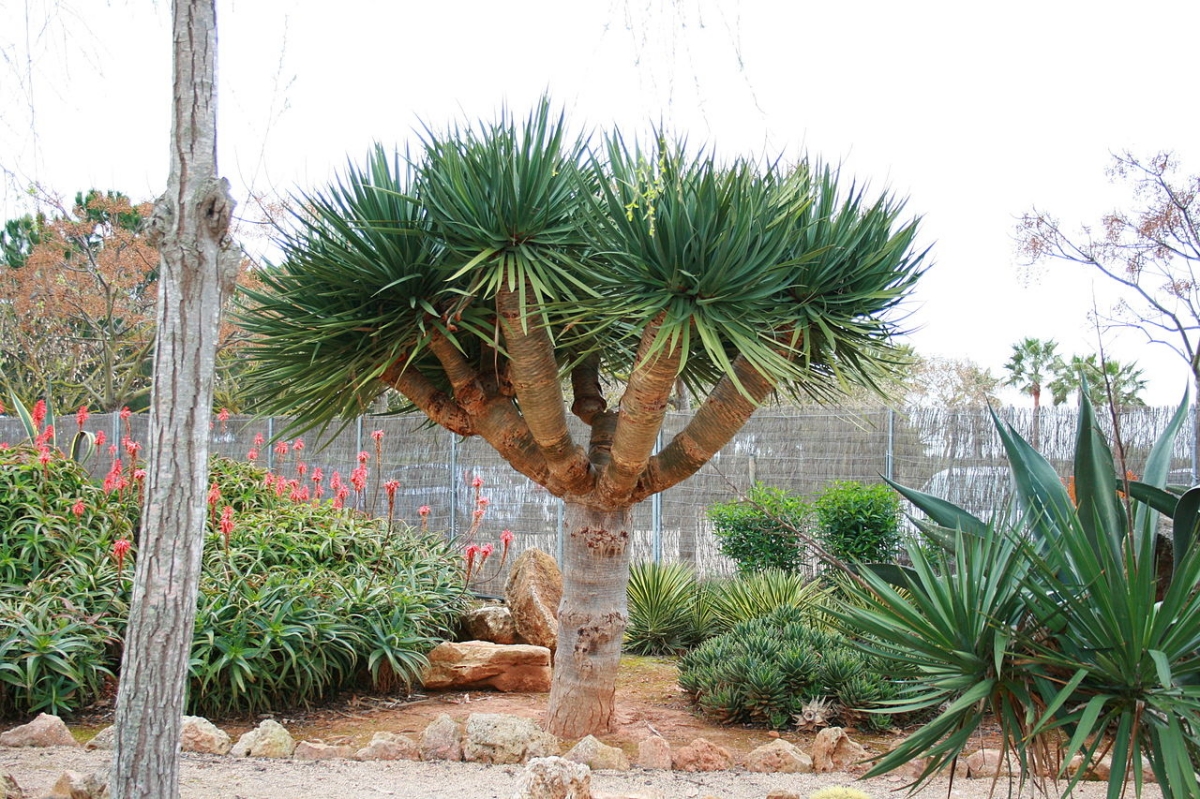
Image - Wikimedia / Frank Vincentz
The dragon tree is a very grateful plant. It does not have to be watered as often as other trees, it can withstand the heat like few others and it does not usually have pests or diseases. But be careful: for it to be healthy, it is very important that it receives the care it needs, taking into account the conditions in which it is grown.
So let's see first what it needs to grow:
- Direct sun: It is the best. I have seen some specimens in semi-shade on the island of Mallorca, but the most beautiful ones are always directly exposed to the king star, throughout the day.
- Light soil with excellent drainage: let us remember that the Canary Islands are volcanic islands, with which the soil allows the roots to receive the air they need to breathe without difficulty. In addition, the dragon tree does not tolerate excess water.
- High ambient humidity: lives on islands and near the coast, places where air humidity is high. In areas where it is low, the tips of the leaves will quickly turn brown and may drop.
- Water, but without going over: if it is in a pot, you do have to pay attention to watering, but a specimen that has been in the ground for more than two years will not need as much water.
- Warm weather: the ideal is that there is never any frost, but it can withstand up to -2ºC without suffering damage. Perhaps it can withstand up to -3ºC if it is planted in a very protected area, such as in a corner of the garden, or surrounded by plants that make it a bit of a windbreak. In the event that the winter is harder, it will be necessary to have it at home.
And having said that, let's now talk about the care that must be given to our canary dragon tree.
Location
The most important thing is to find a place where the sun hits it directly. But if it is going to be on the ground, you must also take into account the adult dimensions that it will reach. Thus, it should be planted at least three meters away from walls or walls, since this way there will be no danger of their branches rubbing against them as they grow.
Soil or substrate
- Potted: we can use substrate for succulents (for sale here), laying a first layer of clay or volcanic gravel for better drainage.
- In the garden: the earth must be light. It grows in limestone soils if they drain water well, but before planting it is advisable to make a planting hole of about 50 x 50cm (at least) and fill it with a mixture of peat and perlite in equal parts.
Irrigation and humidity
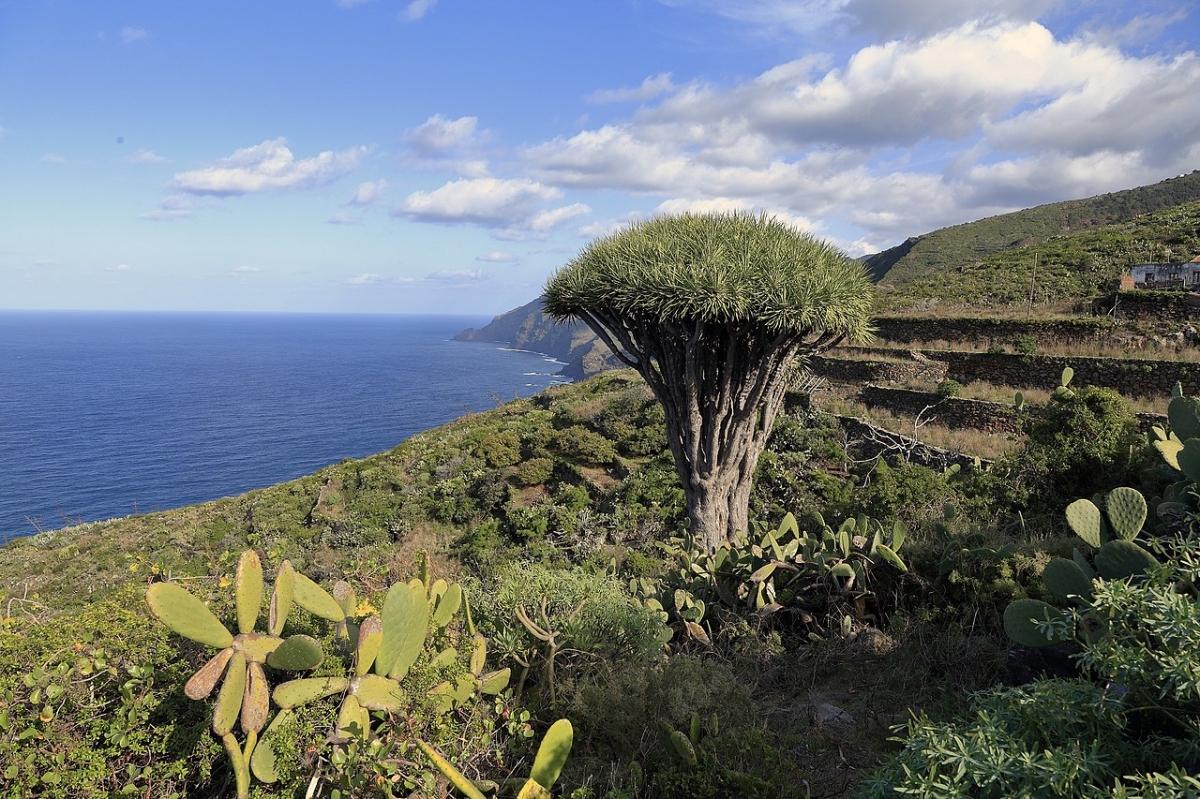
Image – Wikimedia/Falk2
The irrigation of the dragon tree will be, in general, scarce. In order not to take unnecessary risks, water will be poured only when the earth dries up, and as long as there is no rain forecast in the coming days. Tolerates drought.
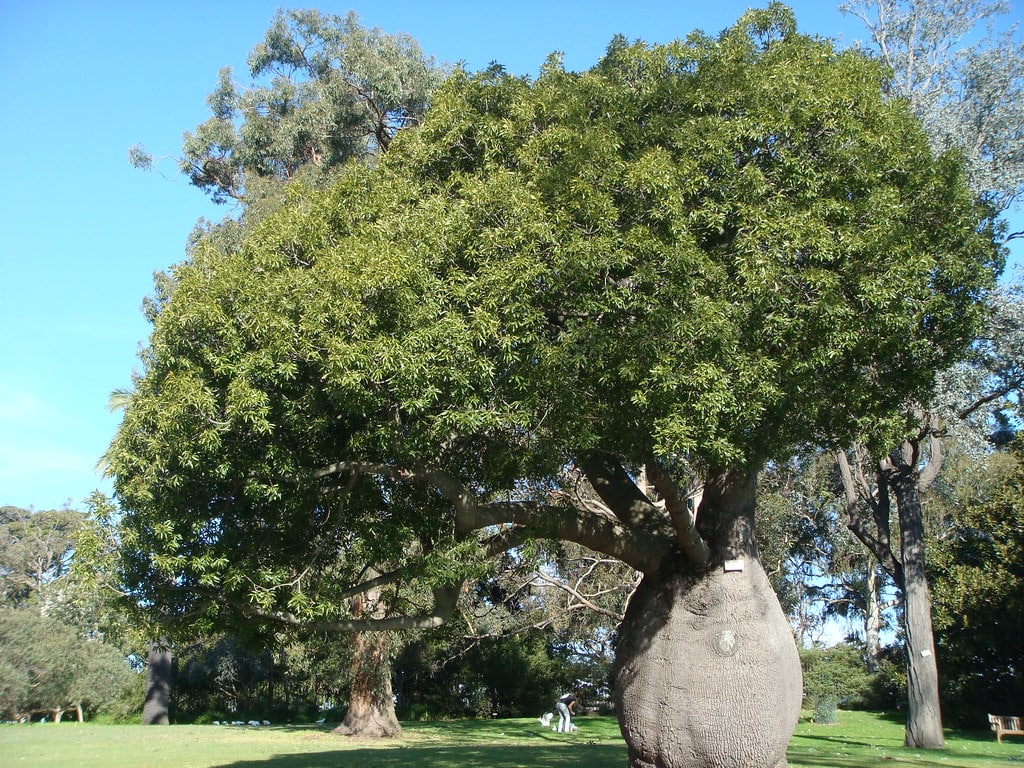
If we talk about the humidity of the air, if we live in an area where it is low (that is, it always stays below 50%), it will be highly advisable to spray its leaves once a day in summer. The rest of the year, since this is when the risk of rotting is highest, it is preferable to place containers with water around it.
Pruning
I do not advise pruning it. you don't really need it. What we can do is remove the dry leaves.
Plagues and diseases
It is very resistant to pests. In fact, it is difficult for it to have unless the environment is very dry, in which case it may be affected by some cochineal, but nothing serious.
But yes is sensitive to fungal diseases, that is, those transmitted by fungi. To be more precise, it can be affected by Phytophthora, Fusarium and Cercospora. But like all fungi, excess water favors them, and more so if it is combined with high ambient or air humidity, so they can be avoided if watered only when necessary, and if planted on light soils. , that drain the water well.
When they are not detected in time, the symptoms that we will see are basically two: yellowish spots on the leaves first, and necrotic later. The trunk can become soft due to the large accumulation of water, and its roots will rot. At the slightest suspicion, it should be treated with a systemic fungicide (such as this), and change the soil if it is not the most suitable.
Transplant
En spring. If it is in a pot, it will be changed every 4 or 5 years if the roots are already showing through the drainage holes.
Multiplication
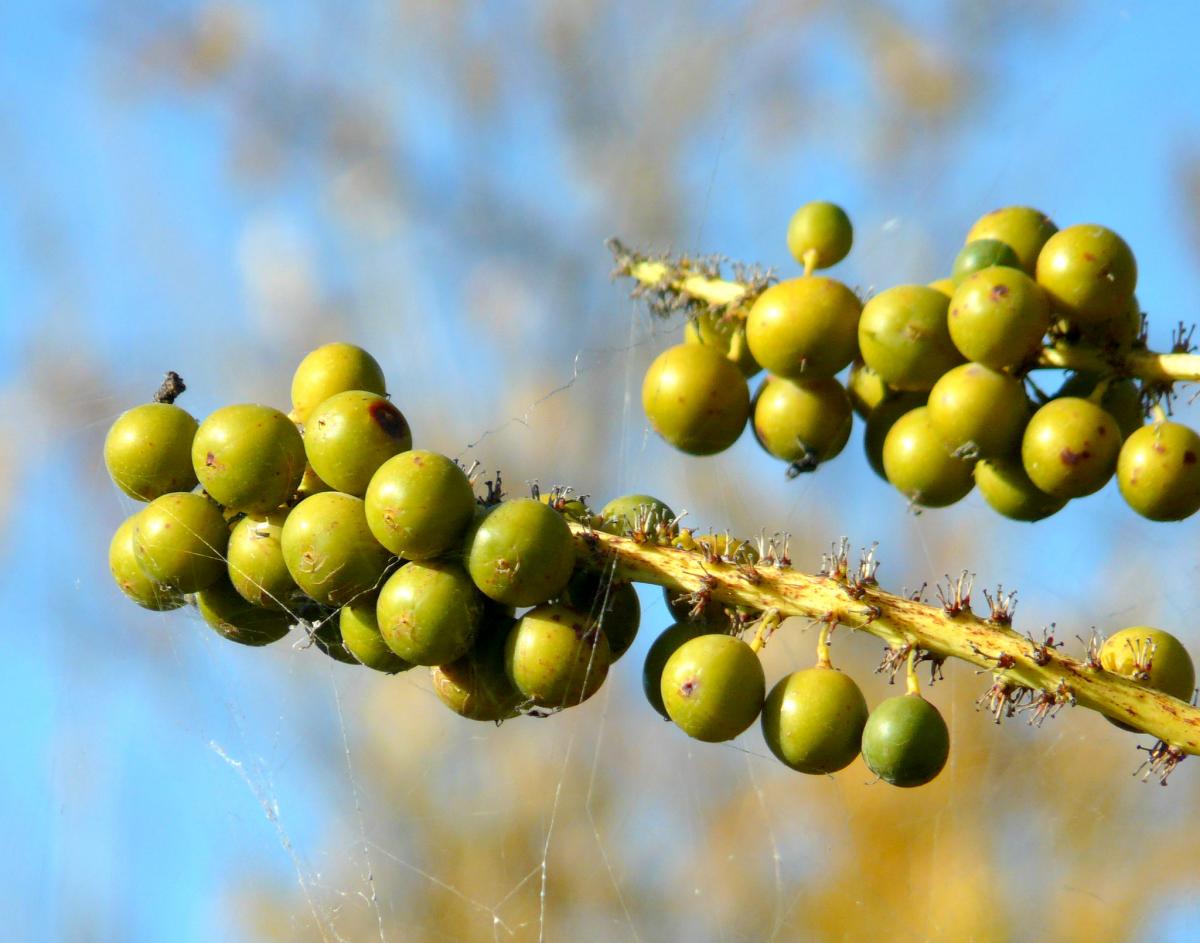
Image – Flickr/Salomé Bielsa // Green fruits of the Canarian dragon tree.
The canary dragon tree multiplies by seeds throughout the spring and summer. They need heat to germinate, and a sandy substrate that weighs little. Of course, you have to be patient as they can take two or three months to sprout.
Another way is by cuttings, also in spring. A branch is cut, and then the wound is allowed to dry for a week in a protected area. And finally, it is planted in a pot, in semi-shade until we see new growth, which will be when it moves to a sunny place.
Rusticity
Up to -2ºC minimum, and up to 40ºC maximum. If in our area the frosts are more intense, it will be kept at home, in a room where a lot of natural light enters.
How about the dracaena draco? Like?